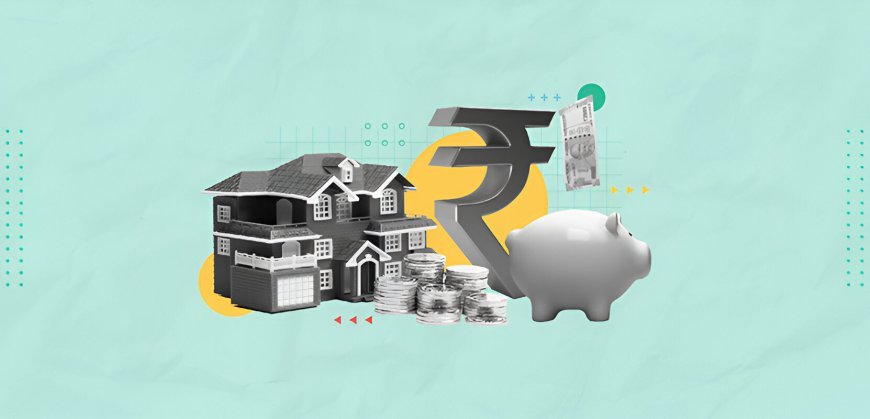How to Reduce Your Home Loan EMI and Pay Off Faster
Paying EMIs for 20 years? What if you could finish in 12? Discover smart hacks to slash your home loan burden in 2025.

Owning a home is a proud milestone. But for most Indians, the real journey begins after the keys are handed over, when EMIs start rolling in. If your home loan feels more like a chain than a step up, it’s time to rethink how you’re managing it. With interest rates shifting and new financial policies in play, 2025 brings several opportunities to reduce that EMI stress. Here’s how to take charge.
Cut EMI Burden by Refinancing at Better Terms
Many banks have trimmed lending rates in early 2025. SBI cut its MCLR by 25 basis points, and Canara Bank followed suit. If your loan is still running at older, higher rates, you’re losing money every month.
What to do:
Compare current offers. Talk to your bank. And if needed, transfer your loan to a lender with better terms. Even a 0.5% drop can save you lakhs over the years.
Pro tip:
Always ask your current lender for a revised rate before making the switch. You might not even need to leave.
Use Extra Cash to Cut Your Home Loan Faster
Let’s say you received a bonus or had an FD mature. Instead of spending or reinvesting all of it, consider a partial loan prepayment.
Why it works:
A ₹5 lakh prepayment in the 3rd year of a ₹50 lakh loan (20 years at 8.5%) can shorten the loan by up to 4 years and save ₹10–12 lakh in interest.
Make it count:
Tell your bank to apply the amount directly to the principal, not towards future EMIs. This ensures your interest burden drops significantly over time.
Increase EMIs as Your Salary Grows

Your income may rise over the years, but is your EMI still stuck at year one?
Solution:
Opt for an EMI increase every year. Even a 5 to 10% hike annually can cut your tenure in half. You won’t feel the pinch if your salary is rising, but your loan will shrink much faster.
Example:
If your EMI is ₹43,000 on a ₹50 lakh loan, increasing it to ₹47,000 next year and gradually upwards can shave years off your repayment schedule.
Pick the Right Tenure, Not Just the Lowest EMI
Yes, longer tenures bring lower EMIs. But don’t fall into the trap.
What it really means:
Lower EMIs may ease your monthly load, but they inflate your total interest. If you can afford the existing EMI, reduce tenure instead of stretching it.
Strategy:
When rates drop, resist the urge to reduce EMI. Keep it steady and use the rate cut to close the loan earlier. Over time, you save more this way.
Pay Bi-Weekly to Close Your Loan Faster
Here’s a little-known trick:
If your lender allows bi-weekly payments (instead of monthly), you end up making 26 payments in a year, which means one full EMI more.
Why it works:
That single extra EMI each year can knock years off your loan. It’s subtle, and you don’t feel the burden. Flexi EMI plans can also help when income is irregular or seasonal, giving you more control over payments.
Maintain a High Credit Score for Better Loan Deals
A credit score above 750 can unlock better rates and faster approvals.
What helps:
Pay EMIs on time.
Avoid multiple loans at once.
Keep your credit card utilization low.
Why it matters:
When negotiating with lenders for better terms or lower interest, your score is your strongest ally.
Use the End of Deductions to Accelerate Repayment
Under the new tax regime, deductions like Section 24(b) and 80C are gone. Which means? You’re no longer getting tax benefits for interest or principal repayment.

That’s not bad news if you flip the strategy. Use the absence of deductions as motivation to close the loan faster with aggressive prepayments. The faster you repay, the less you lose in interest.
Should You Reduce EMI or Tenure After a Rate Cut?
Many jump to lower their EMI after a rate cut. But that’s often short-sighted.
Let’s break it down:
On a ₹40 lakh loan at 8.5%:
Reducing EMI: Saves ₹3.01 lakh.
Keeping EMI steady and reducing tenure: Saves ₹6.93 lakh.
If you can handle the original EMI, hold it. Use the extra space to reduce the term, and breathe easier sooner.
Conclusion
A home loan doesn’t have to be a 20-year burden. With the right strategy, you can take control, and finish strong, years ahead of schedule. Whether you tweak your EMI, switch lenders, or top up payments when life allows, every smart move adds up. And the best part? That peaceful moment when the last EMI clears is worth every rupee saved along the way.
FAQs
How can I reduce my home loan EMI without increasing the tenure?
You can reduce EMI without stretching the tenure by refinancing your loan at a lower interest rate, or by making a partial prepayment that brings down the principal. You may also increase your EMI voluntarily as your income grows, which shortens the loan term and reduces interest.
Is refinancing my home loan worth it in 2025?
Yes, especially now. With many banks reducing MCLR and repo-linked lending rates, refinancing to a lower rate can save you thousands every year. Always compare processing fees and check your remaining tenure to ensure the switch is financially beneficial.
Does making a lump-sum prepayment reduce EMI or tenure?
It depends on what you choose. You can either reduce the EMI amount or keep the EMI steady and cut down the loan tenure. The second option saves more in the long run by reducing total interest paid.
What’s better: reducing EMI or reducing tenure after a rate cut?
Reducing tenure is almost always more beneficial. Keeping your EMI the same after a rate cut allows you to close your loan faster and save significantly on interest. Reducing EMI gives short-term relief but increases the total interest outgo.
How many times can I prepay a home loan? Are there charges?
Most banks allow multiple prepayments, and under RBI guidelines, there are no charges for prepaying floating-rate home loans. Always check your loan agreement or ask your bank about limits for fixed-rate loans.
Can increasing my EMI yearly really reduce my loan burden?
Yes. Increasing your EMI by just 5–10% annually (in line with your salary growth) can cut your loan tenure in half and significantly reduce interest. It’s one of the most powerful yet underused strategies.
Do bi-weekly or flexi-payment options really work?
Absolutely. Switching to bi-weekly payments (26 in a year) adds the equivalent of one extra EMI annually. It’s a subtle, disciplined way to shorten tenure and reduce interest without major cash flow pressure.
What credit score do I need to negotiate better EMI terms?
A credit score above 750 gives you the upper hand in negotiating better interest rates and loan terms. Always pay EMIs on time, keep credit usage in check, and avoid unnecessary loans or cards to maintain a strong score.
Are tax benefits on home loans still available in 2025?
If you're under the old tax regime, deductions under Section 24(b) and 80C still apply. However, under the new regime, those deductions are removed. If you're in the new regime, consider faster prepayments for better financial gain.

 Admin
Admin